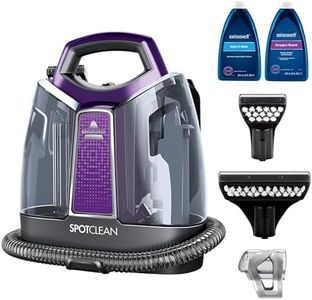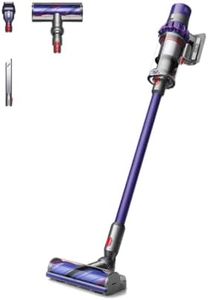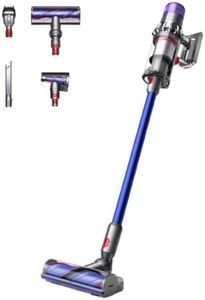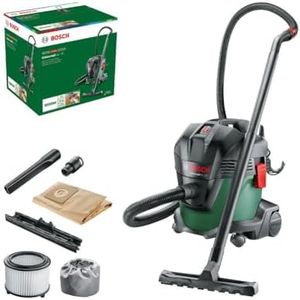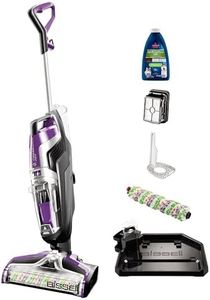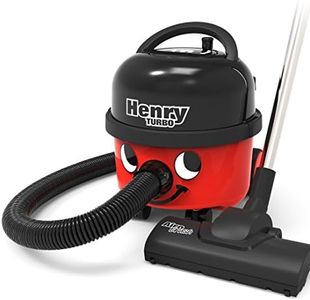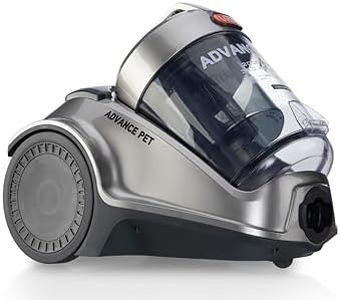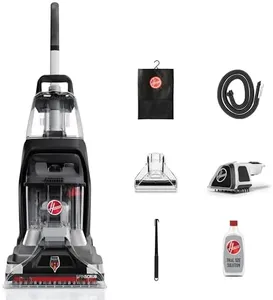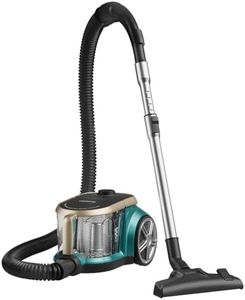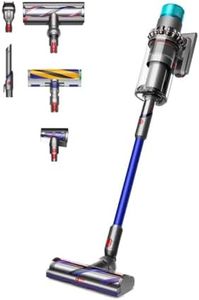We Use CookiesWe use cookies to enhance the security, performance,
functionality and for analytical and promotional activities. By continuing to browse this site you
are agreeing to our privacy policy
10 Best Commercial Vacuum Cleaners
From leading brands and best sellers available on the web.Buying Guide for the Best Commercial Vacuum Cleaners
Choosing a commercial vacuum cleaner is all about understanding your cleaning environment and the types of messes you'll encounter. Unlike home vacuums, commercial units are designed for heavy-duty and frequent use, with durability, power, and efficiency at their core. Consider where you'll be cleaning (offices, hotels, warehouses) and what kind of debris or floor types you'll be dealing with. Matching the machine to your cleaning needs leads to better durability, ease of use, and improved cleaning results.Vacuum TypeThe main types of commercial vacuums are upright, canister, backpack, and wet/dry models. Upright vacuums are easy to use in open areas and are great for carpeted spaces, making them popular in offices and hotels. Canisters offer more flexibility with attachments and are better for hard-to-reach or multi-surface areas. Backpack vacuums allow for mobility over large spaces and stairs, making them suitable for janitorial staff or places filled with furniture. Wet/dry vacuums tackle both liquids and solids, ideal for industrial or workshop environments. Picking the right type depends on your main cleaning tasks and the layout of your space.
Suction PowerSuction power shows how effectively the vacuum removes dirt and debris. Strong suction is essential for deep-cleaning carpets or dealing with tough messes, while lower suction may suffice for light maintenance on hard floors. Some vacuums express suction in air watts or by motor wattage. Smaller spaces or low-traffic areas may not need the highest suction, but for busy areas with heavy soiling, opt for stronger power to ensure thorough cleaning and save time.
Filtration SystemFiltration helps capture dust, allergens, and fine particles during vacuuming. HEPA filters are the gold standard for capturing tiny particles and are highly recommended for healthcare facilities or anywhere high air quality is a concern. Basic filtration is acceptable for less-sensitive areas. If you're cleaning places with allergy concerns or lots of fine dust, consider machines with multi-stage or HEPA filters; otherwise, standard filters may suffice for basic cleaning jobs.
CapacityCapacity refers to how much debris or dust the vacuum can hold before needing to be emptied. Larger capacity means less frequent emptying, making it ideal for big spaces or high-traffic areas. Smaller units may be easier to move around but require more stops for emptying. Gauge your typical cleaning load: for large venues, go for higher capacity; for smaller offices or locations with light messes, a smaller container could make the vacuum lighter and easier to handle.
Weight and ManeuverabilityThe weight of the vacuum influences how easily it can be pushed, carried, or lifted, especially important for multi-level buildings or jobs requiring frequent movement. Lightweight or backpack models are easier for all-day use and when navigating stairs or tight spaces, while heavier units may be better for static, large-area cleaning. Consider who will be using the vacuum and the physical demands of the job—choose lighter and more maneuverable machines for staff that will be moving around a lot.
Noise LevelNoise can be an important factor if you'll be cleaning during business hours or in noise-sensitive environments. Quieter vacuums are rated at lower decibels and are better suited for hotels, clinics, or offices. Louder vacuums are usually fine for after-hours commercial cleaning or industrial workshops. Think about when and where you'll be cleaning, and whether minimizing disruption is important—opt for quieter models if so.
Corded vs. CordlessCorded vacuums offer continuous power and are ideal for large areas with easy access to outlets, while cordless models provide freedom of movement and are best for spaces with obstacles or where outlets are scarce. Cordless vacuums depend on battery life, so consider how long you need it to run between charges. If you value portability and flexibility, a cordless model may be suitable; for large, uninterrupted cleaning tasks, a corded vacuum is often the better fit.

